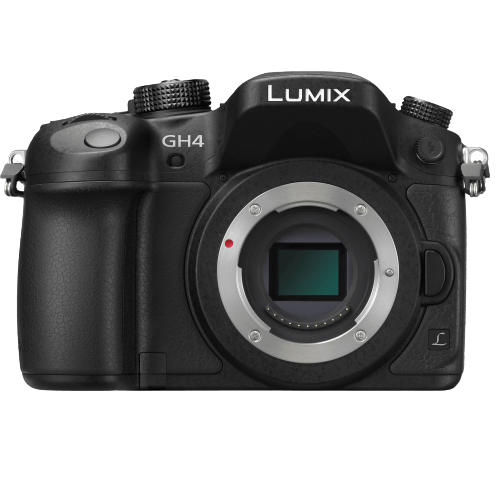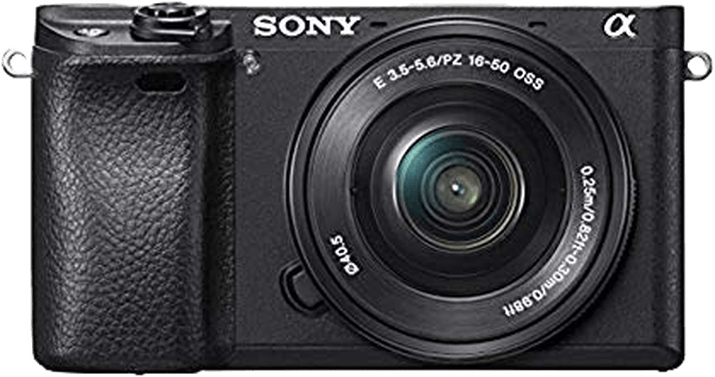Panasonic Lumix DMC-GH4 vs Sony a6300 Comparison
Panasonic Lumix DMC-GH4

Sony a6300

The Sony a6300 outperforms the Panasonic Lumix DMC-GH4 with a score of 61/100 compared to 58/100. Both cameras are mirrorless and were released in 2014 and 2016, respectively. They share similarities in their launch prices, with the GH4 priced at $1700 and the a6300 at $1000.
The GH4 has a larger body, measuring 133 x 93 x 84mm and weighing 560g, while the a6300 is more compact at 120 x 67 x 49mm and 404g. The Sony a6300’s higher score indicates better performance and its smaller size and lighter weight make it more portable. However, the GH4’s larger size and weight may provide better stability for some users.
Considering the specifications, the Sony a6300 is the clear winner in terms of performance and portability, while the Panasonic Lumix DMC-GH4 may appeal to those who prefer a more substantial camera body.
Panasonic Lumix DMC-GH4 vs Sony a6300 Overview and Optics
The Sony a6300 outperforms the Panasonic Lumix DMC-GH4 in optics, with a score of 68/100 compared to the GH4’s 52/100. Both cameras share some specifications, such as CMOS sensor type, lack of image stabilization, and similar shooting speeds (12fps for GH4 and 11fps for a6300). Despite these similarities, the a6300 has distinct advantages over the GH4.
The Sony a6300 boasts a higher megapixel count at 24.2 compared to the GH4’s 16, allowing for greater detail and image quality. Additionally, the a6300’s sensor is larger (APS-C) than the GH4’s Micro Four Thirds, contributing to better low-light performance and dynamic range. The a6300 also has a higher DXOMARK score of 85, indicating its superior sensor quality compared to the GH4’s score of 74. Lastly, the Sony E lens mount offers a wider range of lens options than the GH4’s Micro 4/3 lens mount.
The Panasonic GH4, however, has a slightly faster shooting speed of 12fps compared to the a6300’s 11fps, which could be beneficial for capturing fast-moving subjects. Furthermore, the GH4 has a 4:3 aspect ratio, whereas the a6300 has a 3:2 aspect ratio. This difference in aspect ratios may be a preference for some photographers.
Taking all factors into account, the Sony a6300 excels in optics due to its higher megapixel count, larger sensor, superior sensor quality, and broader lens compatibility. The Panasonic GH4 has a marginal advantage in shooting speed and a different aspect ratio that may appeal to some photographers. However, the a6300’s overall superior performance in optics makes it the better choice for those prioritizing image quality.
Panasonic Lumix DMC-GH4 vs Sony a6300 Video Performance
The Sony a6300 outperforms the Panasonic Lumix DMC-GH4 in video capabilities, with a video score of 91/100 compared to the GH4’s 70/100. Both cameras share some common specifications, such as 4K video resolution and built-in time-lapse functionality. However, there are key differences that contribute to the Sony a6300’s superior performance.
The a6300 boasts a higher max video frame rate of 120fps, while the GH4 offers a maximum of 24fps. This allows the a6300 to capture smoother slow-motion footage, providing more versatility for videographers. Additionally, the a6300’s video dimensions are 3840 x 2160, which is slightly smaller than the GH4’s 4096 x 2160. This minor difference in dimensions does not impact the overall video quality significantly.
On the other hand, the Panasonic GH4 has a larger max video dimension, which could be advantageous for certain applications that require higher resolution. However, this advantage is not enough to outweigh the benefits of the a6300’s higher frame rate and overall better video performance.
Taking these factors into account, the Sony a6300 is the clear winner in terms of video capabilities. Its higher frame rate and impressive video score make it a more versatile and capable camera for capturing high-quality video. While the Panasonic GH4 may offer a slightly larger video dimension, it falls short in other areas, making the a6300 the better choice for videographers.
Panasonic Lumix DMC-GH4 vs Sony a6300 Features and Benefits
The Panasonic Lumix DMC-GH4 outperforms the Sony a6300 in terms of features, scoring 70/100 compared to the Sony a6300’s 54/100. Both cameras share similarities, such as a 3-inch screen size, flip screen, lack of GPS, WIFI capabilities, and absence of Bluetooth. However, the GH4 has a higher screen resolution and a touchscreen, which contribute to its superior score.
The GH4’s screen resolution of 1,036,000 dots surpasses the a6300’s 921,600 dots, providing a clearer and more detailed display for users. Additionally, the GH4’s touchscreen functionality allows for more convenient and efficient operation, as users can directly interact with the screen to adjust settings or focus on subjects. These features make the GH4 a more user-friendly and versatile camera compared to the a6300.
Despite its lower feature score, the Sony a6300 still offers a flip screen, which is a useful feature for photographers who need to shoot from various angles or capture self-portraits. Both cameras’ WIFI capabilities enable easy sharing and transfer of images, while the absence of GPS and Bluetooth does not significantly affect their overall performance.
Considering the Panasonic Lumix DMC-GH4’s higher feature score, it is the better camera in terms of user experience and functionality. Its superior screen resolution and touchscreen capabilities provide a more satisfying user experience, while the Sony a6300’s flip screen is its notable advantage. Ultimately, the GH4 offers more advanced features that cater to a broader range of photography styles and situations.
Panasonic Lumix DMC-GH4 vs Sony a6300 Storage and Battery
The Panasonic Lumix DMC-GH4 outperforms the Sony a6300 in storage and battery with a score of 60/100, compared to the Sony’s 24/100. Both cameras accept SD, SDHC, and SDXC memory cards. However, the GH4 has two memory card slots, giving it an advantage over the a6300, which has only one slot.
The GH4 also boasts a longer battery life, offering 500 shots per charge, while the a6300 provides 400 shots. Both cameras use different battery types, with the GH4 using the DMW-BLF19 and the a6300 using the NP-FW50. Neither camera offers USB charging.
Despite its lower score, the Sony a6300 still provides sufficient storage and battery life for casual photographers. The Panasonic Lumix DMC-GH4, with its superior storage capacity and battery life, is a better option for professional photographers or those who require more storage and longer shooting times.
Panasonic Lumix DMC-GH4 vs Sony a6300 – Our Verdict
Are you still undecided about which camera is right for you? Have a look at these popular comparisons that feature the Panasonic Lumix DMC-GH4 or the Sony a6300:

